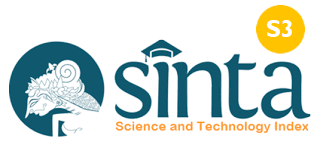Analisis Potensi Museum Batubara PT. Bukit Asam Tanjung Enim Sebagai Sumber Belajar Sejarah
DOI:
https://doi.org/10.37329/cetta.v7i2.3283Keywords:
Potency, PT. Bukit Asam Coal Museum, History Learning Resources, StrategyAbstract
History learning has an ongoing problem because of the assumption that history is just memorizing an event, so that learning is less meaningful. In fact, learning history provides new understanding and knowledge so that students are able to criticize things wisely. The phenomenon in the field is found that students are given learning to know other regions but do not study their own regions. From this problem, the researcher saw that there was potential from the PT Bukit Asam Coal Museum in Tanjung Enim to be an interesting object as a meaningful history learning resource for students. The purpose of this study examines how the potential of the PT Bukit Asam Coal Museum in Tanjung Enim as an appropriate and effective history learning resource. This research is a qualitative research using descriptive analysis techniques with literature review. The results of the research based on literature review and interviews conducted, researchers saw quite a lot of schools and public visitors who made field trips to the museum, meaning that this field trip-based history learning strategy is quite potential and effective to be applied to students. The field trip strategy helps students form a certain picture of the object being studied. Learning outside the classroom is one of the most effective learning strategies that gives students the freedom to develop and explore what they learn directly. Through field trip activities, students seem to be entertained because they can see and learn directly through the museum.
References
Abimanyu, S. (2008). Strategi Pembelajaran. Jakarta: Direktorat Jendral Pendidikan Tinggi Departemen Pendidikan Nasional.
Adnan, F. (2020). Kunjungan Lapangan (Field Trip) Sebagai Metode Pembelajaran. Annual Conference on Islamic Education and Thought ACIET, 1(1), 94–104.
Butzer, K. W. (2005). Environmental history in the Mediterranean world: Crossdisciplinary investigation of cause-and-effect for degradation and soil erosion. Journal of Archaeological Science, 32(12), 1173–1800.
Chaniago, A. F., Hidayat, W., & Firzal, Y. (2018). Perancangan Museum Batubara di Tanjung Enim dengan Pendekatan Arsitektur Metafora. JOM FTEKNIK, 5(2), 1–5
Fakhruddin, A. M., Sembiring, D. A., & Luthfia, R. A. (2024). Urgensi Pelaksanaan Field Trip dalam Pembelajaran Kenampakan Alam Bagi Peserta Didik. Jurnal Pendidikan Tambusai, 8(3), 589–600.
Friederich, M. C., & van Leeuwen, T. (2017). A review of the history of coal exploration, discovery and production in Indonesia: The interplay of legal framework, coal geology and exploration strategy. International Journal of Coal Geology, 178, 56–73.
Hamdani. (2012). Strategi Belajar Mengajar. Bandung: Pustaka Setia.
Hindayati, I. (2023). Analisis Metode Pembelajaran Field Trip terhadap Hasil Belajar Peserta Didik di Sekolah Menengah Atas (SMA). Geography Science Education Journal (GEOSEE), 4(1), 13–18.
Kemendikbudristek BSKAP. (2022). Keputusan Kepala Badan Standar, Kurikulum, dan Asesmen Pendidikan Kementerian Pendidikan, Kebudayaan, Riset, dan Teknologi Nomor 008/H/KR/2022 Tentang Capaian Pembelajaran pada Pendidikan Anak Usia Dini, Jenjang Pendidikan Dasar, dan Jenjang Pendidikan Menengah pada Kurikulum Merdeka.
Khairani. (2023). Metode Pembelajaran Karya Wisata pada Mata Pelajaran Sejarah Kebudayaan Islam. PEDAGOGIK: Jurnal Pendidikan Dan Riset, 1(2), 147–152.
Maysuri, T., Sair, A., & Yusuf, S. (2021). Sejarah Penambangan Batubara Bukit Asam di Tanjung Enim. HISTORIA: Jurnal Program Studi Pendidikan Sejarah, 9(1), 87–96.
Rahayu, S., Salman, S. W., Rindayani, S., Radha, T. A. P., Nur, Y. M., & Dewi, E. M. P. (2023). Efektivitas Kegiatan Field Trip sebagai Metode Pembelajaran di Runiah School Makassar. KHIDMAH: Jurnal Pengabdian Kepada Masyarakat, 3(1), 41–51.
Siby, R., & Kasingku, J. D. (2024). Pengaruh Rekreasi sebagai Sarana Pendidikan Dalam Meningkatkan Kesehatan Mental Siswa. Jurnal Educatio, 10(2), 416–424.
Simamora, R. (2021). Upaya Meningkatkan Hasil Belajar Siswa Menggunakan Metode Field Trip Dalam Pembelajaran IPS Di SD Negeri 56 Aek Batu Kecamatan Torgamba. Journal Ability: Journal of Education and Social Analysis, 2(3), 108–115.
Suridah, Fajar, D., Fahrurrozi, Anggraeni, R., Ulfa, R., & Sonia. (2020). Pelaksanaan Metode Karyawisata dalam Pembelajaran Pendidikan Agama Islam di Taman Kanak-Kanak. Al-TA’DIB, 12(2), 294.
Taneo, M., Madu, A., & Krisnawati, N. (2023). Pendampingan Penerapan Metode Field Trip bagi Guru SD SMP dan SMA di Kabupaten Timor Tengah Utara. Amalee: Indonesian Journal of Community Research and Engagement, 4(1), 93–106.
Utari, & Zafri. (2020). Pelaksanaan Metode Karyawisata pada Pembelajaran Sejarah Kelas X IPS 2 di SMA Negeri 3 Bukittinggi. Kronologi, 2(1), 33–39.
Wibowo, B., & Dediansyah, A. (2020). Sejarah Lingkungan sebagai Pendidikan Pengurangan Resiko Bencana di Kabupaten Ketapang Kalimantan Barat. Khazanah Pendidikan: Jurnal Ilmiah Kependidikan, XIV(1), 68–77.
Widiyanto, B. (2017). Penerapan Metode Field trip pada MK. Pendidikan Lingkungan Hidup untuk Meningkatkan Kepedulian Mahasiswa terhadap Permasalahan Sampah. Cakrawala: Jurnal Pendidikan, 11(2), 159–169.
Zed, M. (2018). Metode Penelitian Kepustakaan. Jakarta: Yayasan Pustaka Obor.
Downloads
Published
How to Cite
Issue
Section
License
Copyright (c) 2024 Abdan Radiallah, Daya Negri Wijaya, R. Reza Hudiyanto, Aditya Nugroho Widiadi

This work is licensed under a Creative Commons Attribution-ShareAlike 4.0 International License.
An author who publishes in the Cetta : Jurnal Ilmu Pendidikan agrees to the following terms:
- Author retains the copyright and grants the journal the right of first publication of the work simultaneously licensed under the Creative Commons Attribution-ShareAlike 4.0 License that allows others to share the work with an acknowledgement of the work's authorship and initial publication in this journal
- Author is able to enter into separate, additional contractual arrangements for the non-exclusive distribution of the journal's published version of the work (e.g., post it to an institutional repository or publish it in a book) with the acknowledgement of its initial publication in this journal.
- Author is permitted and encouraged to post his/her work online (e.g., in institutional repositories or on their website) prior to and during the submission process, as it can lead to productive exchanges, as well as earlier and greater citation of the published work (See The Effect of Open Access).
Read more about the Creative Commons Attribution-ShareAlike 4.0 Licence here: https://creativecommons.org/licenses/by-sa/4.0/.





